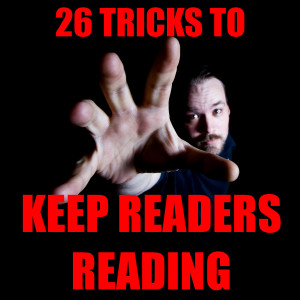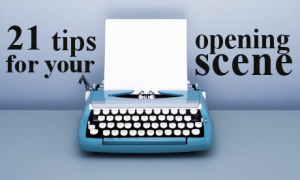Unmet desire. That’s how author Steven James defines tension. Unmet desire drives your hero, drives the story, and drives the literary agent and the bookstore browser. The desire to know what happens next, the desire to feel something – this is the D in AIDA that leads to the A. Action.
Action in this case is taking the time (and/or spending the money) to finish reading your book. Which means you have to create a page-turner. Something un-put-down-able.
Here’s the best advice I found.
The Mindset
Who cares?
James Scott Bell advises you to constantly ask yourself this question as you write. Adam Gidwitz suggests you picture someone you know who is in your target demographic. Someone with a relatively short attention span. Predict their reactions to each scene in your mind. Ask yourself what would make them turn the page.
The Structure
Elizabeth Sims has a brilliantly simple method for plotting an un-put-down-able book, which she calls the HCM method (HCM = Heart-Clutching Moments). List all the HCMs in your story – pivotal points like chases, escapes, kidnaps, revelations, and love at first sight. Then, think of more. Find opportunities to dramatize what you previously only summarized, or left out entirely.
Construct your story around these moments, rather than on a loosely-constructed storyline.
Milk it
Get the most out of every scene:
- Put chapter breaks just before or just after HCMs to create cliffhangers
- Carefully delay some action – like making Pandora argue with herself for hours before opening the box
- Use surprising but logical plot twists. Victoria Lynn Schmidt notes the art is in making the reader wonder what could possibly happen next, without making them incredulous after it happens.
Don’t be a drag
Don’t let those pages get cold:
Steven James warns you to avoid these tension killers:
- Background exposition
- Repetition – use your fight scenes, explosions and tender moments sparingly
- Waking up from the scary dream and realizing it was just a dream – is a deflation, not an escalation
Tips on dialogue from Elizabeth Sims and Jessica Page Morrell:
- Avoid using dialogue for information dumps – cut it down as far as possible
- Don’t use dialogue to rehash or comment on events – show those events instead
- Do use dialogue for tension – power struggles, mind games, etc., wherein strong emotion runs underneath, but is never explicitly stated
- Try blending dialogue with action – like during a car chase instead of over a quiet dinner
- Dialogue should mostly be short sentences with lots of fragments and white space – avoid conversations that go on for pages
Plus, remember:
- Perfect people are boring. Show readers your hero’s emotional needs, wounds and skeletons in the closet
- Don’t waste time – begin the story at the last possible moment
Dig deeper
Most good stories have both an internal and an external struggle. Make sure you’re inside the hero’s head, wanting and fearing everything he wants and fears.
- Go deeper than surface motivation – deeper than just saying the hero wants to do the right thing. What does he stand to gain (or lose) emotionally? Satisfaction? Acceptance? A sense of power?
- Try giving your hero a secret that must never be told (which of course will get told)
- Make each scene do at least two of the following:
- Establish the characters
- Advance the plot
- Foreshadow events
- Braid in subplots
Give ‘em Hell
To keep raising the stakes, you have to train yourself to think of the worst possible ways to hurt your hero. What will cut him deepest? What will complicate matters most? You can’t save the life of a minor character just because you like them (or worse, because you don’t want to put the hero through the pain of losing them). Here are some ways to say “no more Mr. Nice Writer”:
From Jessica Page Morrell:
- Introduce new characters, settings and circumstances that throw your hero off-balance
- Throw a devastating curve ball just when the hero is about to accomplish his mission
From Elizabeth Sims:
- Add an unpredictable character – someone who’s “not all there” and may do something dangerous at any moment
From James Scott Bell:
- Can you raise the stakes with outside events, like oncoming war or a natural disaster?
- What’s the worst thing that can happen in the hero’s professional life? Family life? Love life?
- How are the people the hero cares for most effected by events?
- Think from the villain’s perspective – how else can he thwart the hero?
—
What the heck is AIDA? If you missed the original post, read it here.
–

How to make your book “un-put-down-able.”











